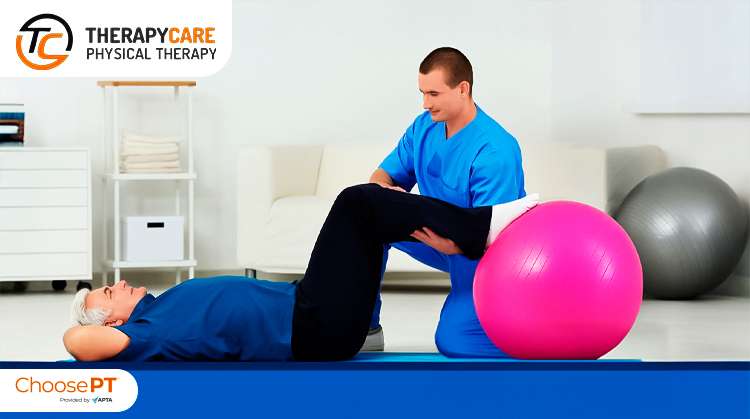
If you have low back pain, you are not alone. At any given time, about 25% of people in the United States report having had low back pain within the past three months. In most cases, low back pain is mild and disappears on its own. For some people, back pain can return or hang on, leading to a decrease in quality of life or even disability. Physical therapists help people with low back pain improve or restore mobility and reduce their pain. And, according to a new study, choosing physical therapy for low back pain outperforms usual primary care and is cost-effective.
Physical therapists are movement experts. They improve quality of life through hands-on care, patient education, and prescribed movement. You can contact a physical therapist directly for an evaluation. To find a physical therapist in your area, visit Find a PT.
Low back pain is defined by its location, typically the area between the lower ribs and buttock crease. The symptoms of low back pain vary a great deal. Your pain might be dull, burning, or sharp. You might feel it at a single point or over a broad area. Low back pain can occur along with muscle spasms or stiffness. Sometimes, it spreads into one or both legs.
There are three different types of low back pain:
Most people who have an episode of acute low back pain will have at least one recurrence. While the cause of low back pain isn’t always known, its symptoms can resolve on their own.
Research shows that personal factors, such as self-confidence and perceived ability to cope with disability, may be predictive of who may not recover as expected from low back pain. In the past, low back pain was thought to be related directly to just the physical aspects of our body. We now understand the condition to be much more complex.
Low back pain is rarely serious or life-threatening. However, the following serious conditions may be linked to low back pain:
Although these conditions can directly contribute to low back pain, they also can be present in people without any pain. If your physical therapist suspects a more serious health condition is causing your pain, they will refer you to other health care specialists for further evaluation.
If you are having low back pain right now:
If you have low back pain along with the following symptoms, visit your local emergency department at once:
Together, these symptoms may point to a condition called cauda equina syndrome, in which the spinal nerves that control the bowel and bladder are being squeezed.
Your physical therapist will perform a thorough evaluation and physical exam that includes:
For most cases of low back pain, imaging tests such as X-rays, CT scans, and MRIs are not helpful. It often is frustrating for patients when imaging tests don’t reveal the actual cause of their low back pain. Fortunately, however, low back pain can get better without a visual assessment of its cause.
Your physical therapist can help you improve or restore mobility and reduce your low back pain. In many cases, they help people avoid expensive surgery and the risks and side effects of prescribed medications.
Not all low back pain is the same. You should receive treatment tailored to you and your specific symptoms and condition. Your physical therapist will:
Physical therapists can use a variety of techniques to address each person’s pain. Your physical therapy treatment may include:
Learn more about recommended treatments for low back pain.
A wealth of research has shown that physical therapy is an effective treatment for acute low back pain. In a recent study, researchers calculated the economic impact of choosing physical therapy for acute low back pain over usual care. They found that doing so saves $4,160, including all the hidden costs of your time, pain, missed life events, and the dollars paid for services. Early physical therapy can give you the knowledge you need to take care of your back and reduce the need for prescribed opioids.
Also see:
As experts in restoring and improving mobility and movement, physical therapists play an important role in treating chronic or recurrent low back pain. They also can help you reduce the risk for having an episode of low back pain in the first place (prevention), educate you on how to manage it if it occurs, and minimize your risk of having it come back or become chronic.
Your physical therapist can teach you strategies for prevention and management of low back pain that may include:
Evidence suggests that pain can develop for reasons beyond injury to the body’s tissue. Understanding why we feel pain and how to address it when it arises are the best strategies to prevent disability and improve self-management of low back pain. Learn more about pain.
All physical therapists are prepared through education and experience to treat people who have low back pain. You may want to consider:
You can find physical therapists who have these and other credentials by using Find a PT, the online tool built by the American Physical Therapy Association to help you search for physical therapists with specific clinical expertise in your geographic area.
General tips when you’re looking for a physical therapist (or any other health care provider):
We understand what you’re going through. And we’ll do whatever it takes to get you back in action. We offer flexible hours and in most cases, we can see you within 24 hours.